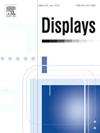Assessment of commanders’ situation awareness: a study based on SEEV, QN-ACTR, and cognitive load
IF 3.4
2区 工程技术
Q1 COMPUTER SCIENCE, HARDWARE & ARCHITECTURE
引用次数: 0
Abstract
In modern naval ship command environment, commanders must collaborate with the Command and Control System (C2S) in various scenarios to accomplish complex tasks. Commanders’ effective Situational Awareness (SA) is crucial for effective human–computer collaborative decision-making. To improve the assessment of SA during the commanders’ interaction with the C2S and enhance collaborative efficiency, this paper proposes an improved SA model. This model builds upon a previously developed SA model based on attention allocation and integrates the Queueing Network Adaptive Control of Thought-Rational (QN-ACTR) framework to quantitatively analyze the commanders’ cognitive processes. Furthermore, cognitive load theory is introduced to account for individual differences among commanders. To validate the improved SA model, we conducted simulation experiments involving 23 participants across four different interaction schemes. The subjective scores and eye-tracking data collected during the experiments validate the efficacy of the proposed SA model. The results showed that the proposed SA model can predict the SA of commanders with varying anti-fatigue levels and perform better than the previous model. Furthermore, the findings also indicate that cognitive load and suboptimal interface designs can negatively impact the commanders’ perception and comprehension, reducing the commanders’ SA level. This study provides a new tool for the quantitative measurement of commanders’ SA, which will aid in the development of more effective C2S for naval ships and optimize human–computer interaction design.
指挥官态势感知评估:基于SEEV、QN-ACTR和认知负荷的研究
在现代海军舰艇指挥环境中,指挥官必须在各种场景下与指挥控制系统(C2S)协同完成复杂任务。指挥官有效的态势感知是有效的人机协同决策的关键。为了改进指挥官与C2S互动过程中对安全响应的评估,提高协同效率,本文提出了一种改进的安全响应模型。该模型在前人提出的基于注意力分配的队列网络自适应控制模型的基础上,集成了思想理性队列网络自适应控制(QN-ACTR)框架,对指挥员的认知过程进行了定量分析。此外,还引入了认知负荷理论来解释指挥官之间的个体差异。为了验证改进的SA模型,我们在四种不同的交互方案中对23名参与者进行了模拟实验。实验中收集的主观得分和眼动追踪数据验证了该模型的有效性。结果表明,该模型能较好地预测不同抗疲劳水平指挥员的SA,具有较好的预测效果。此外,认知负荷和次优界面设计会对指挥官的感知和理解产生负向影响,降低指挥官的SA水平。该研究为指挥官感知能力的定量测量提供了一种新的工具,有助于为海军舰艇开发更有效的感知能力,优化人机交互设计。
本文章由计算机程序翻译,如有差异,请以英文原文为准。
求助全文
约1分钟内获得全文
求助全文
来源期刊

Displays
工程技术-工程:电子与电气
CiteScore
4.60
自引率
25.60%
发文量
138
审稿时长
92 days
期刊介绍:
Displays is the international journal covering the research and development of display technology, its effective presentation and perception of information, and applications and systems including display-human interface.
Technical papers on practical developments in Displays technology provide an effective channel to promote greater understanding and cross-fertilization across the diverse disciplines of the Displays community. Original research papers solving ergonomics issues at the display-human interface advance effective presentation of information. Tutorial papers covering fundamentals intended for display technologies and human factor engineers new to the field will also occasionally featured.
 求助内容:
求助内容: 应助结果提醒方式:
应助结果提醒方式:


